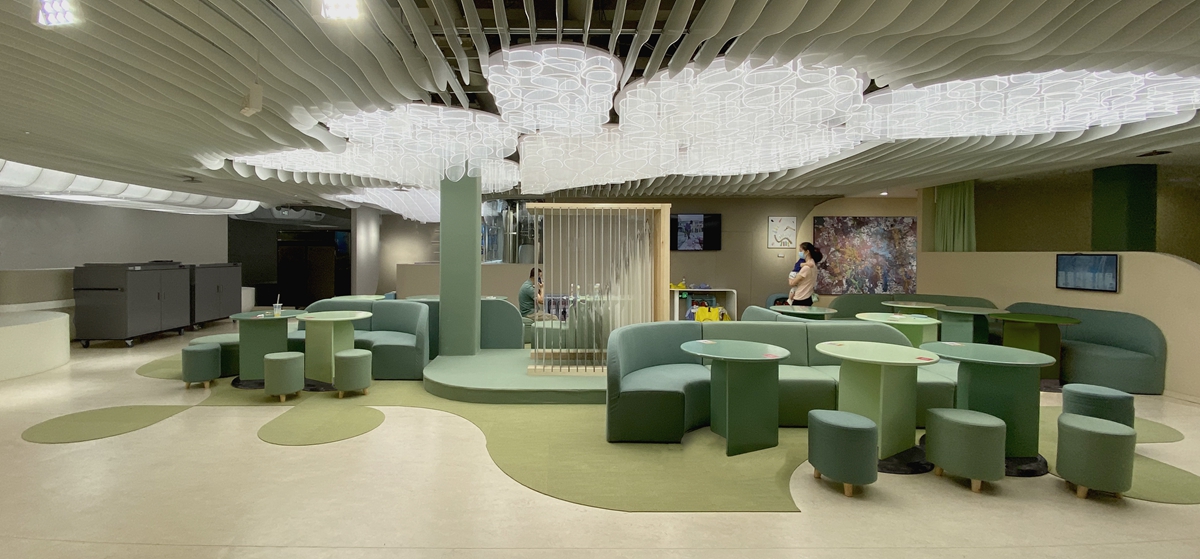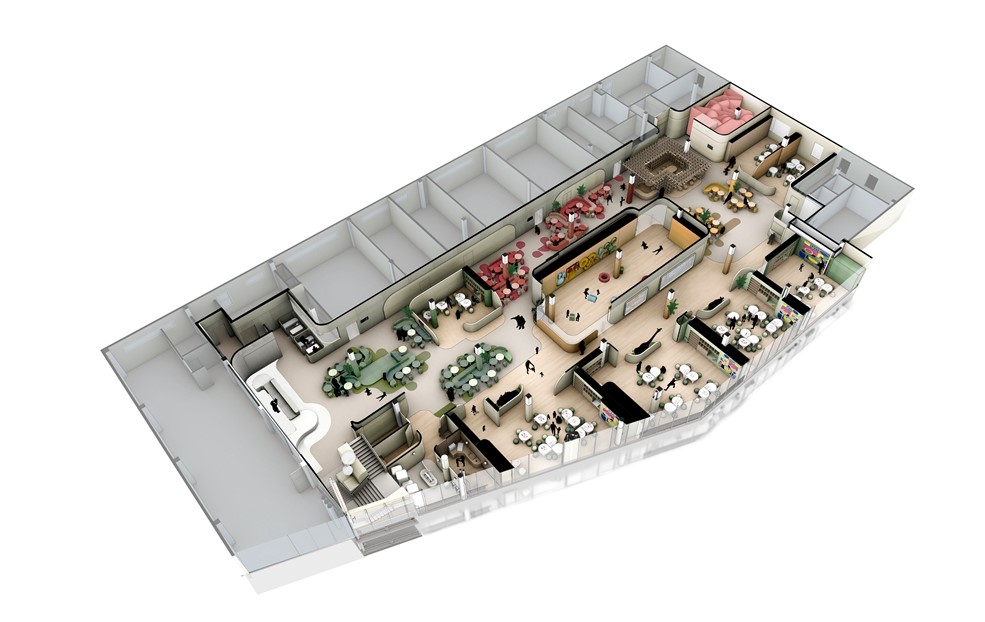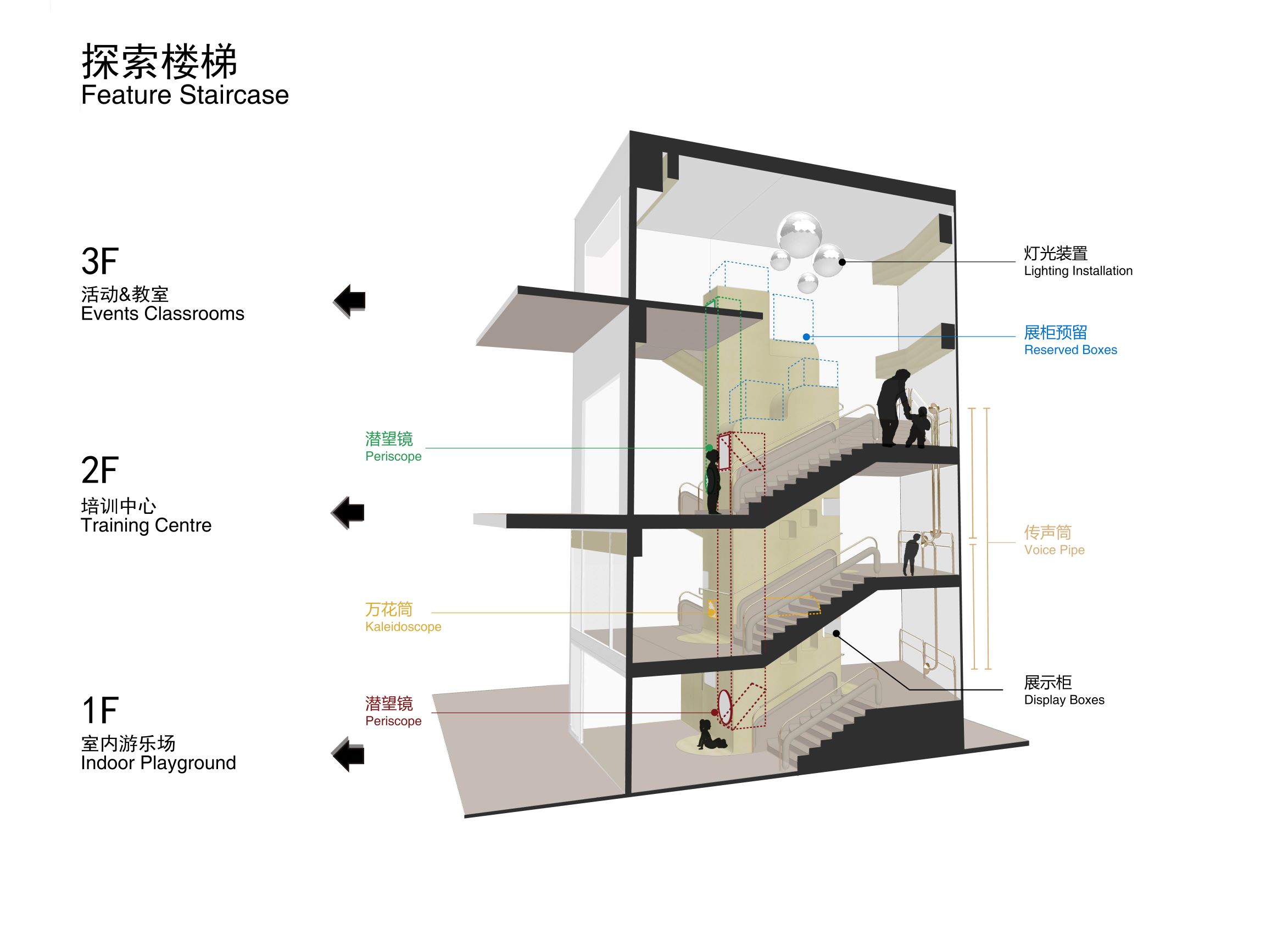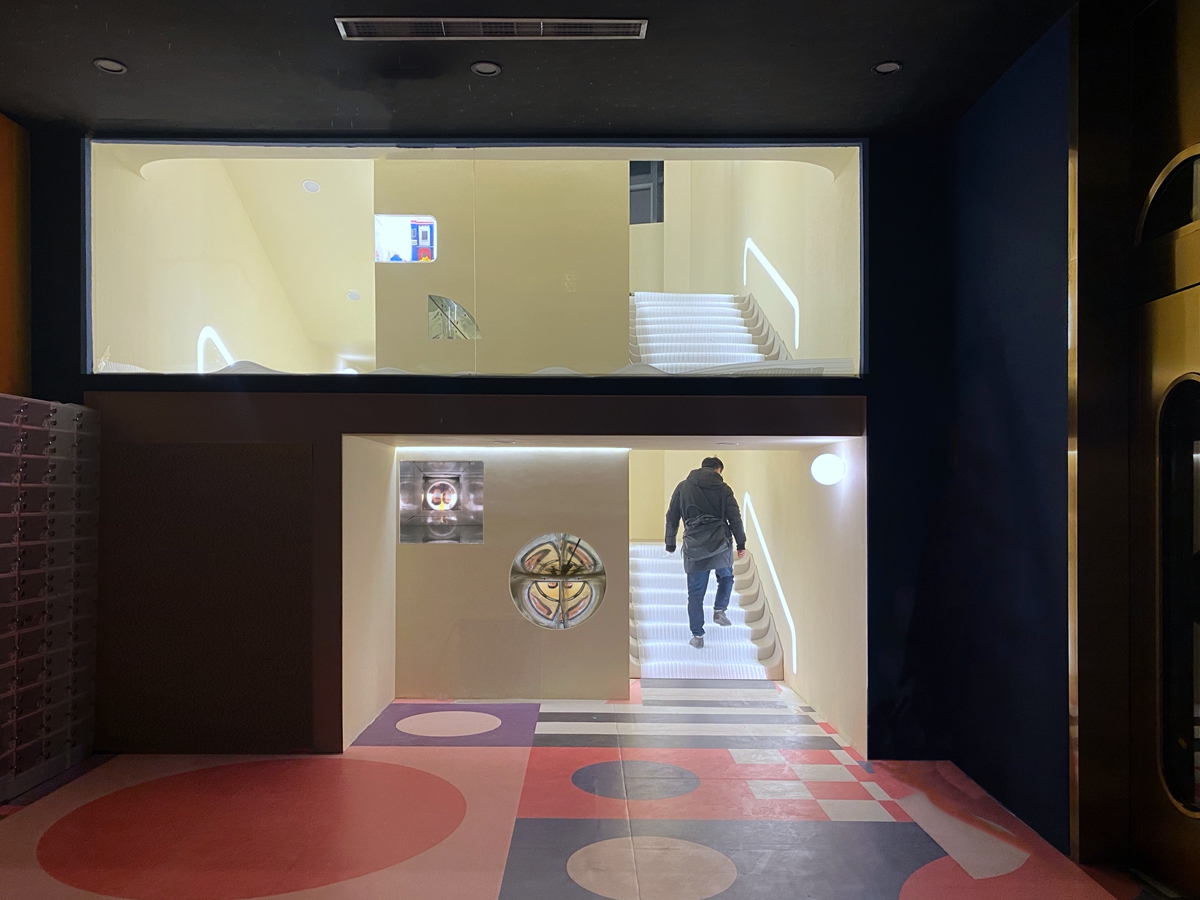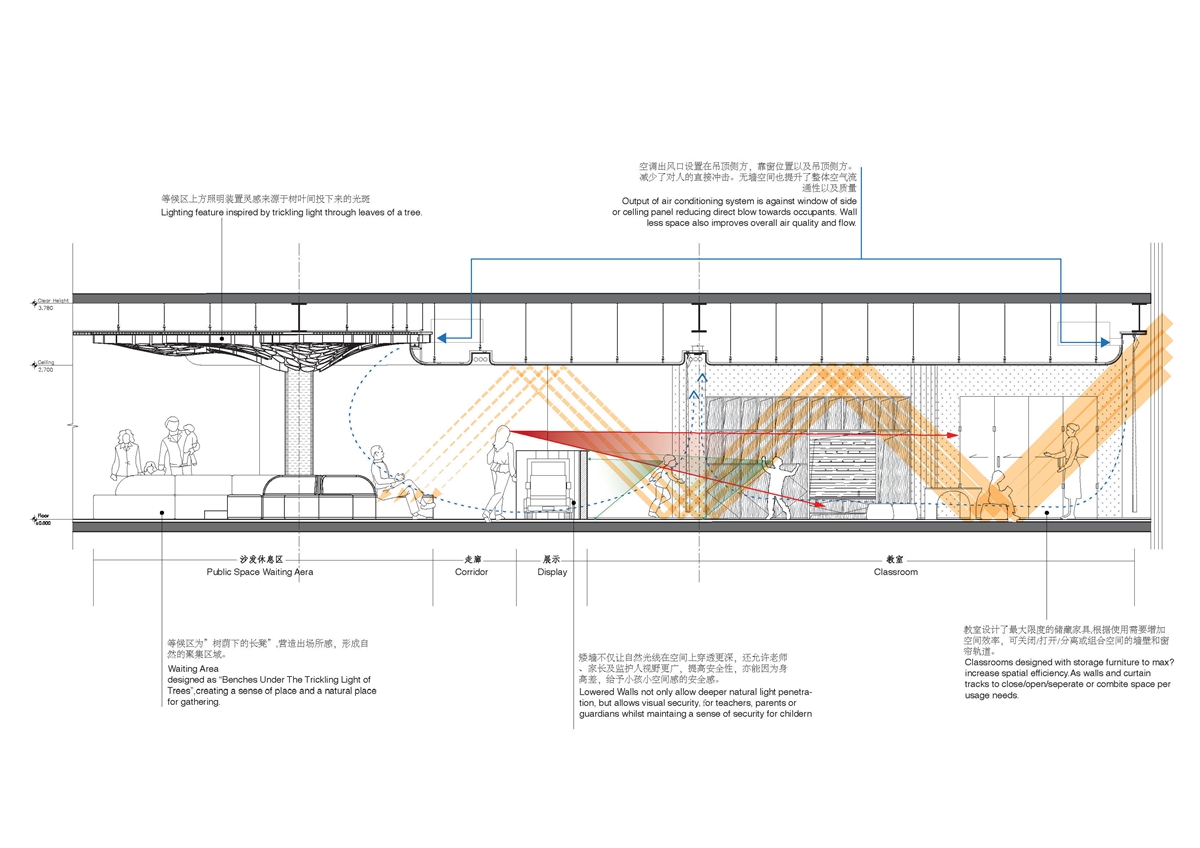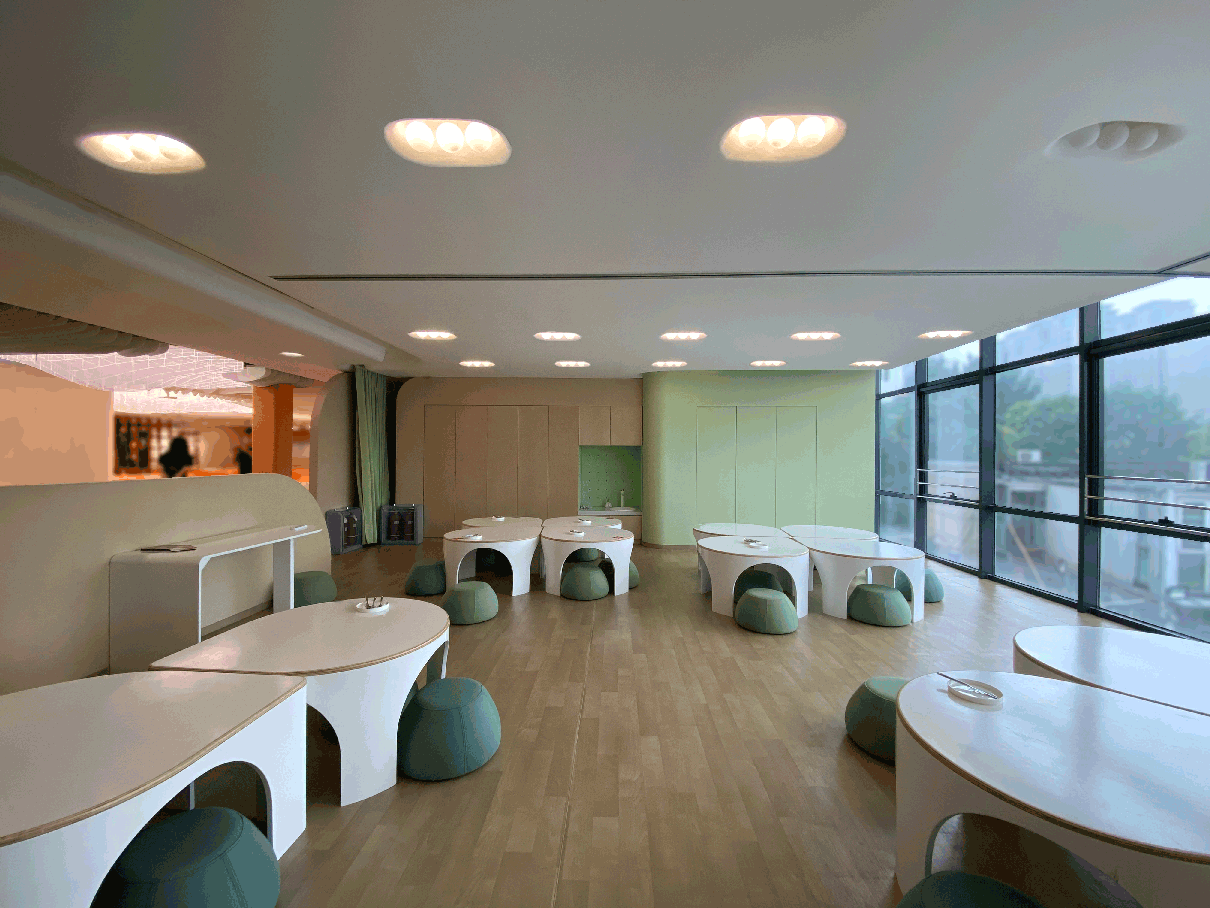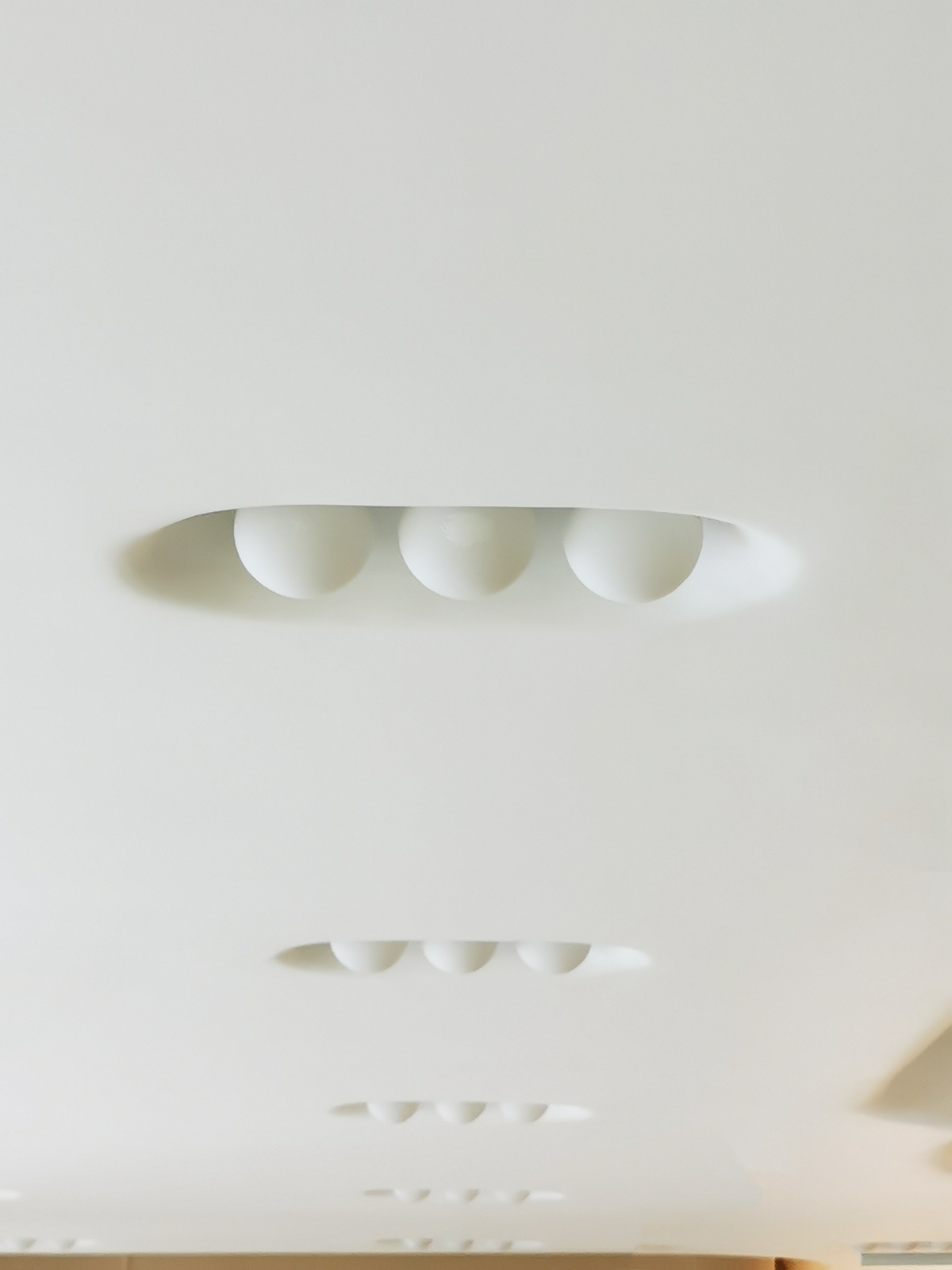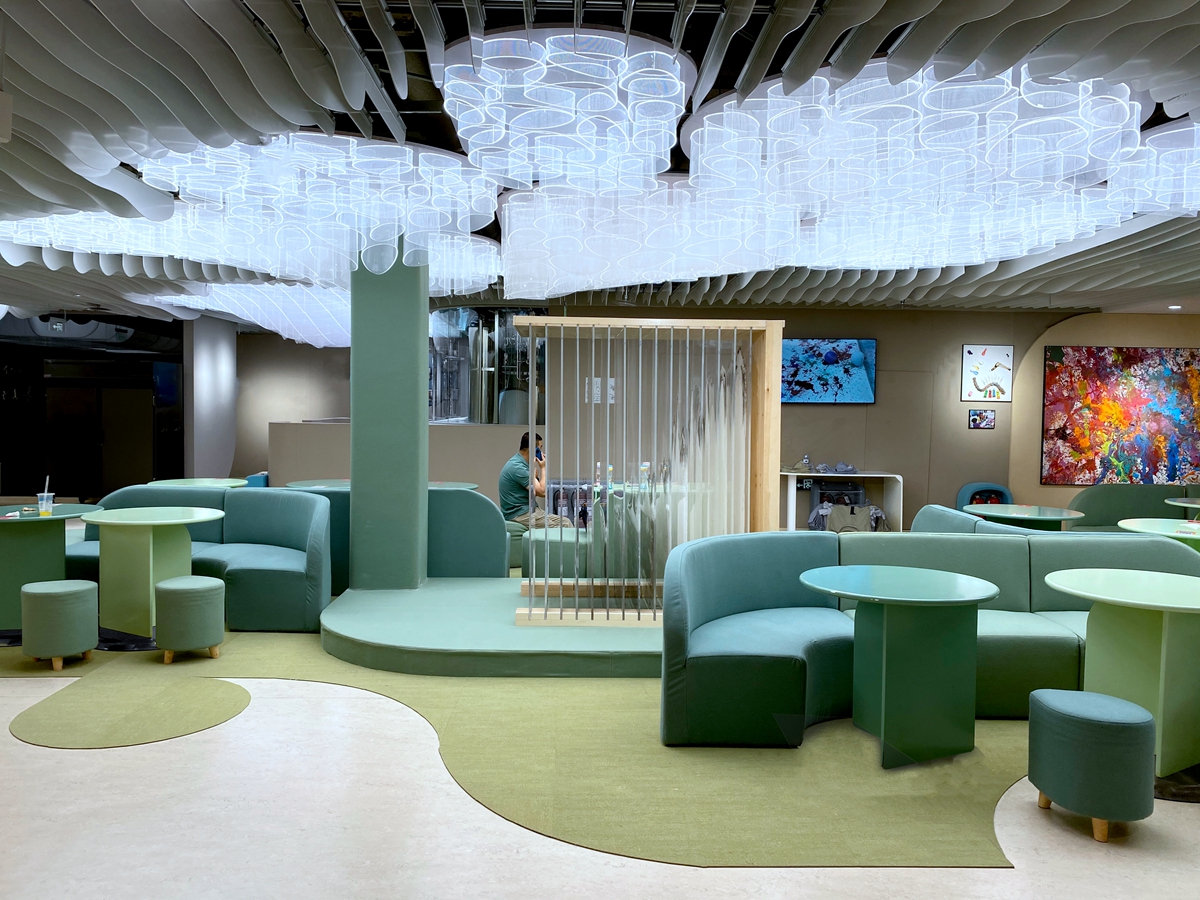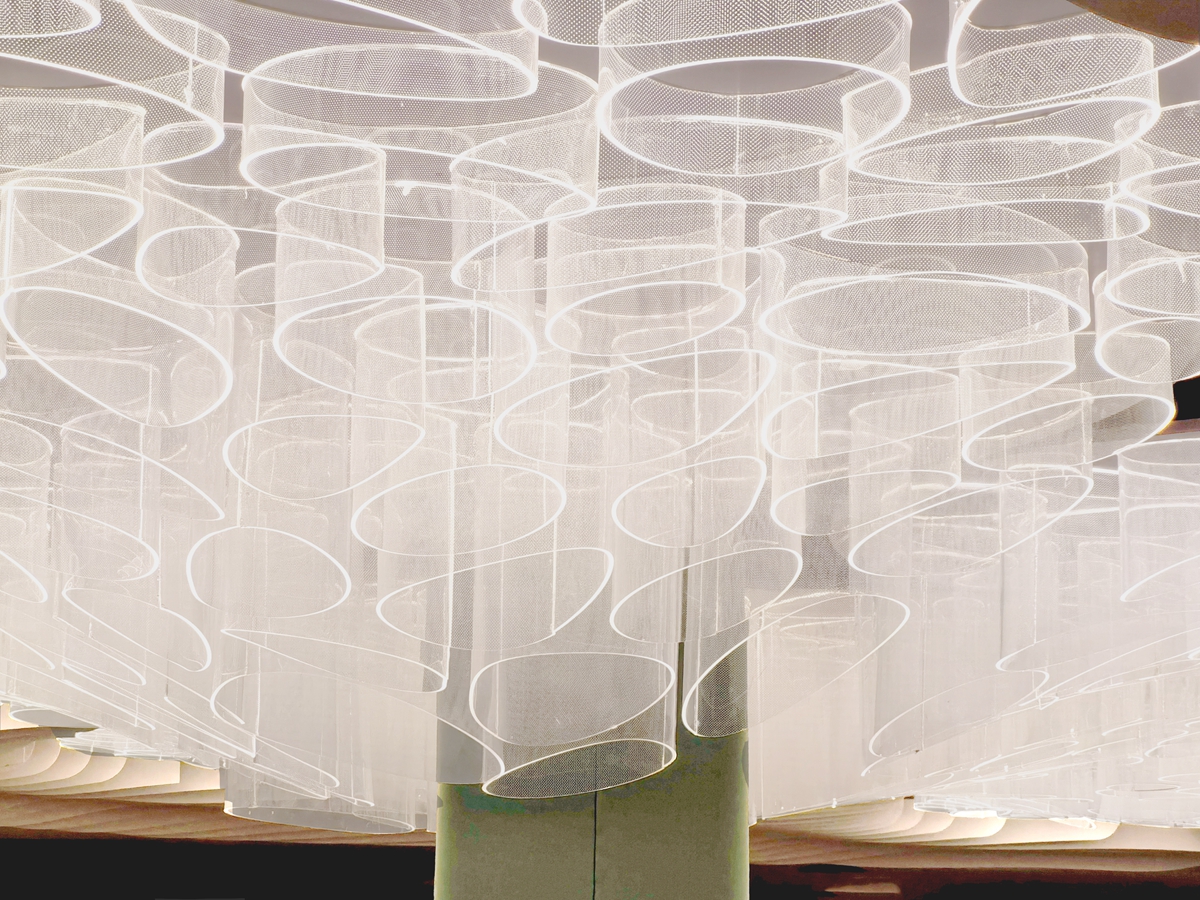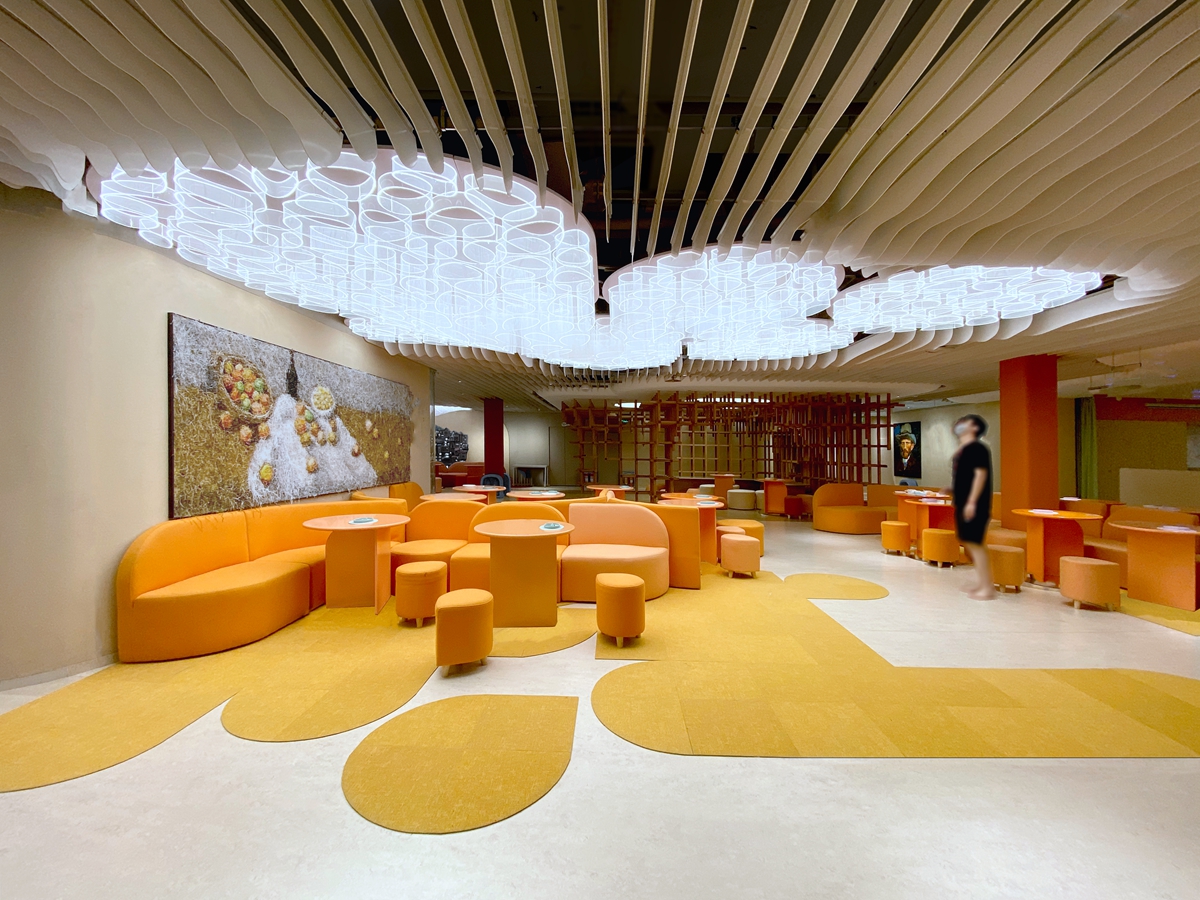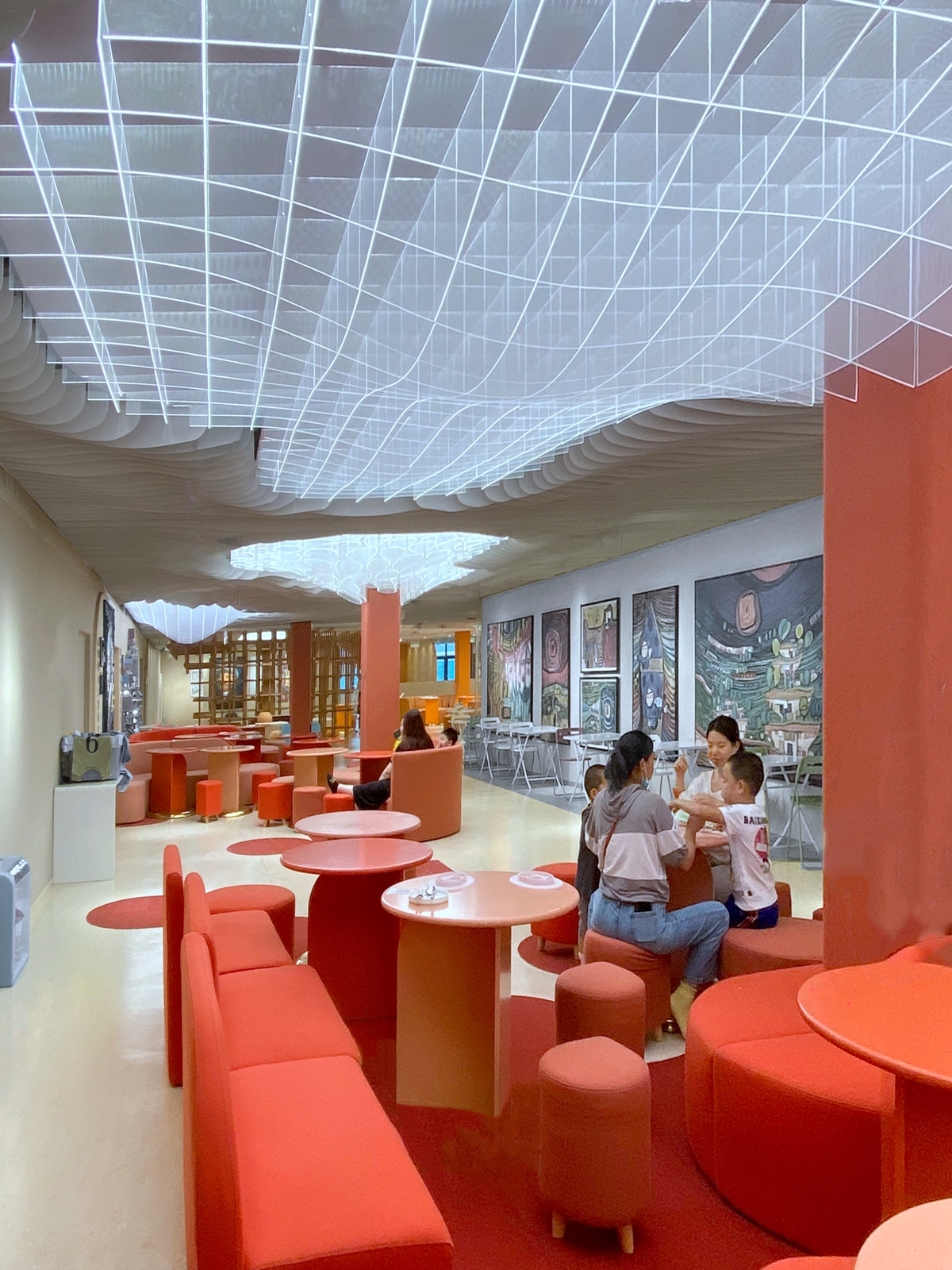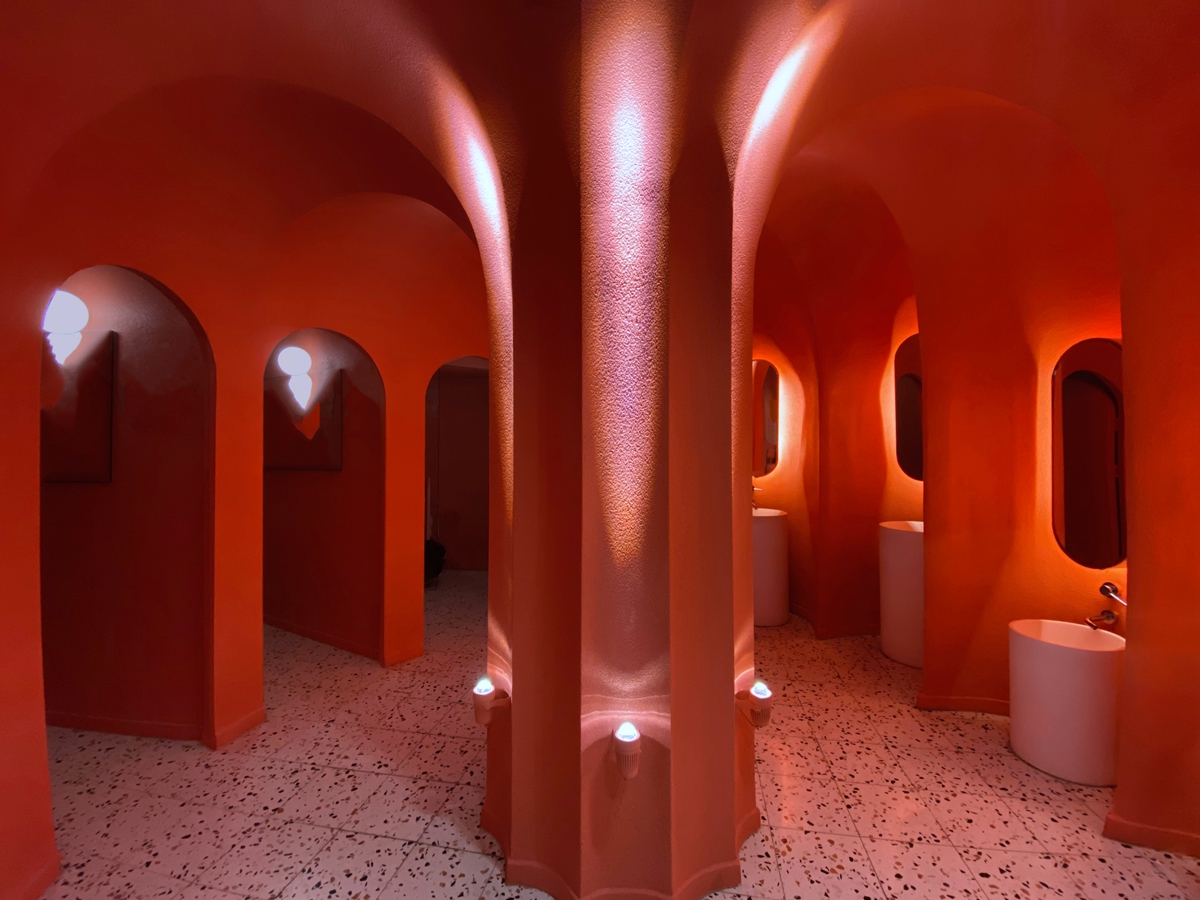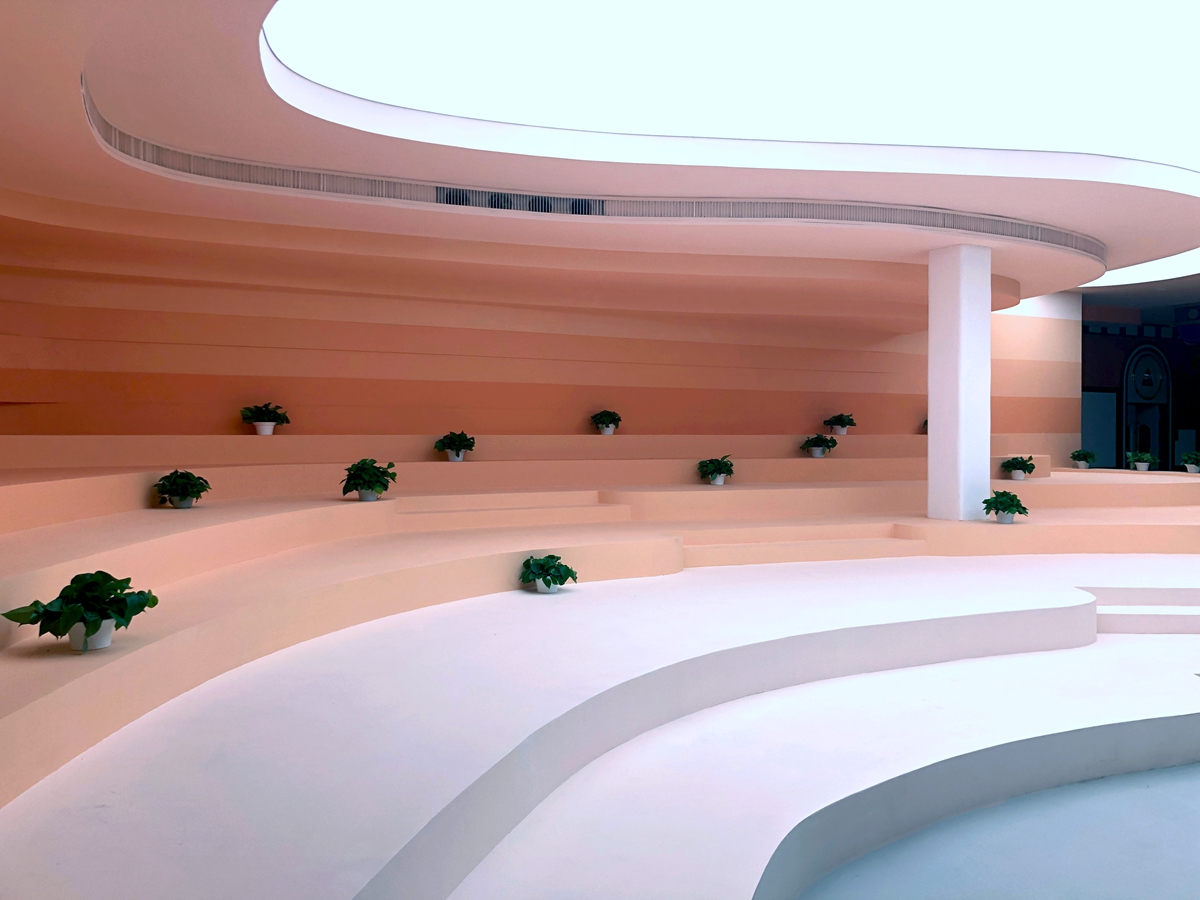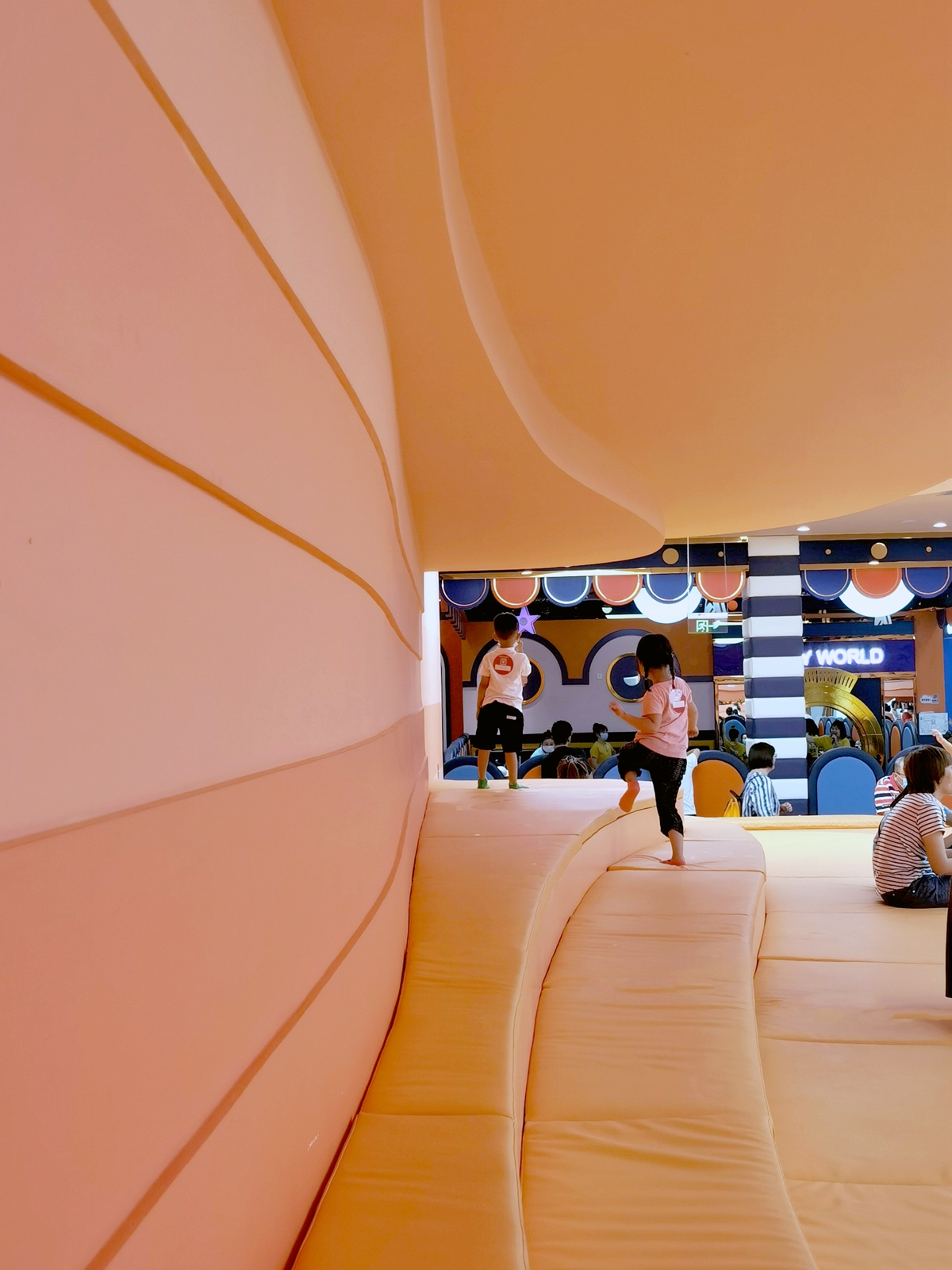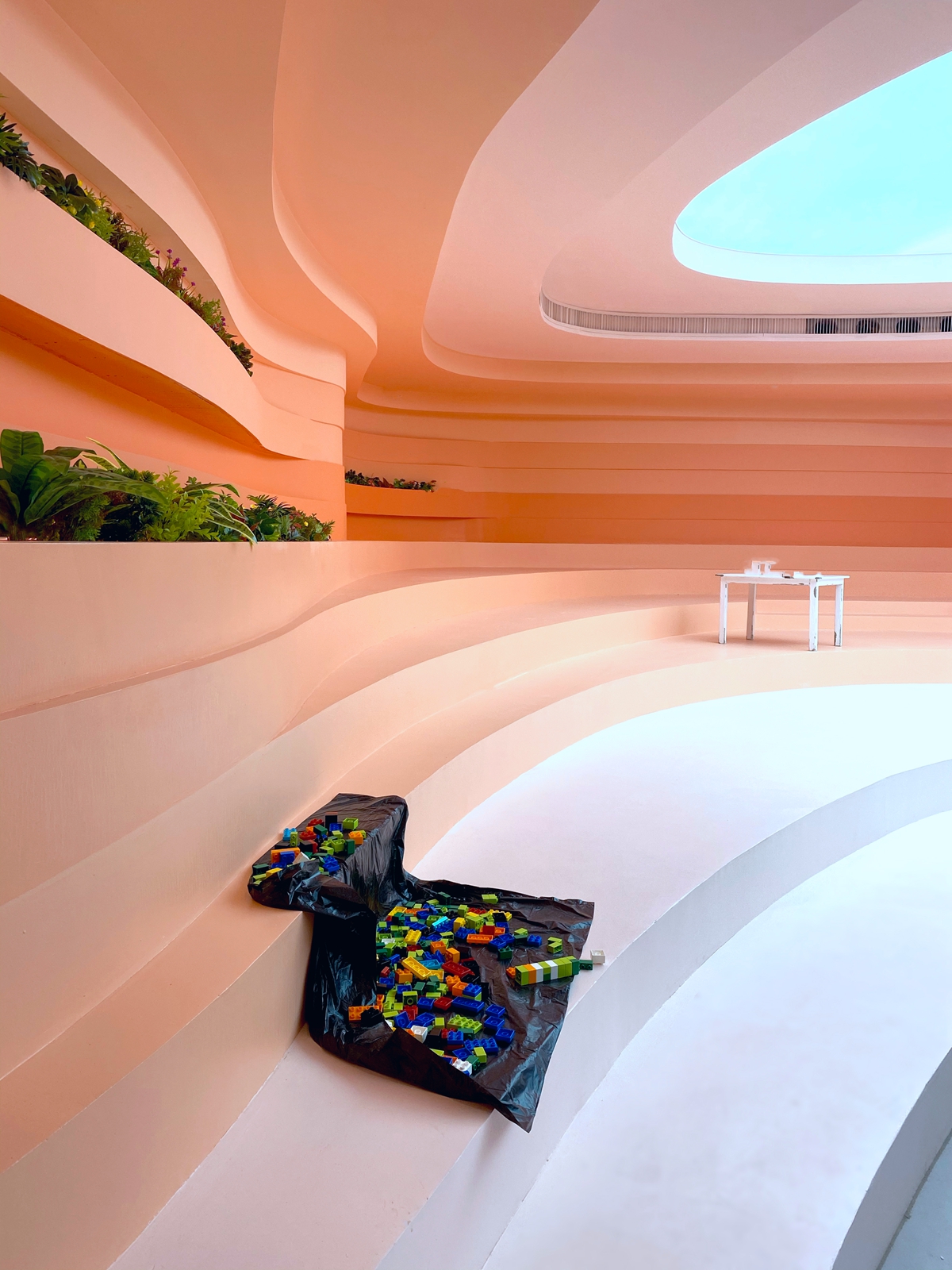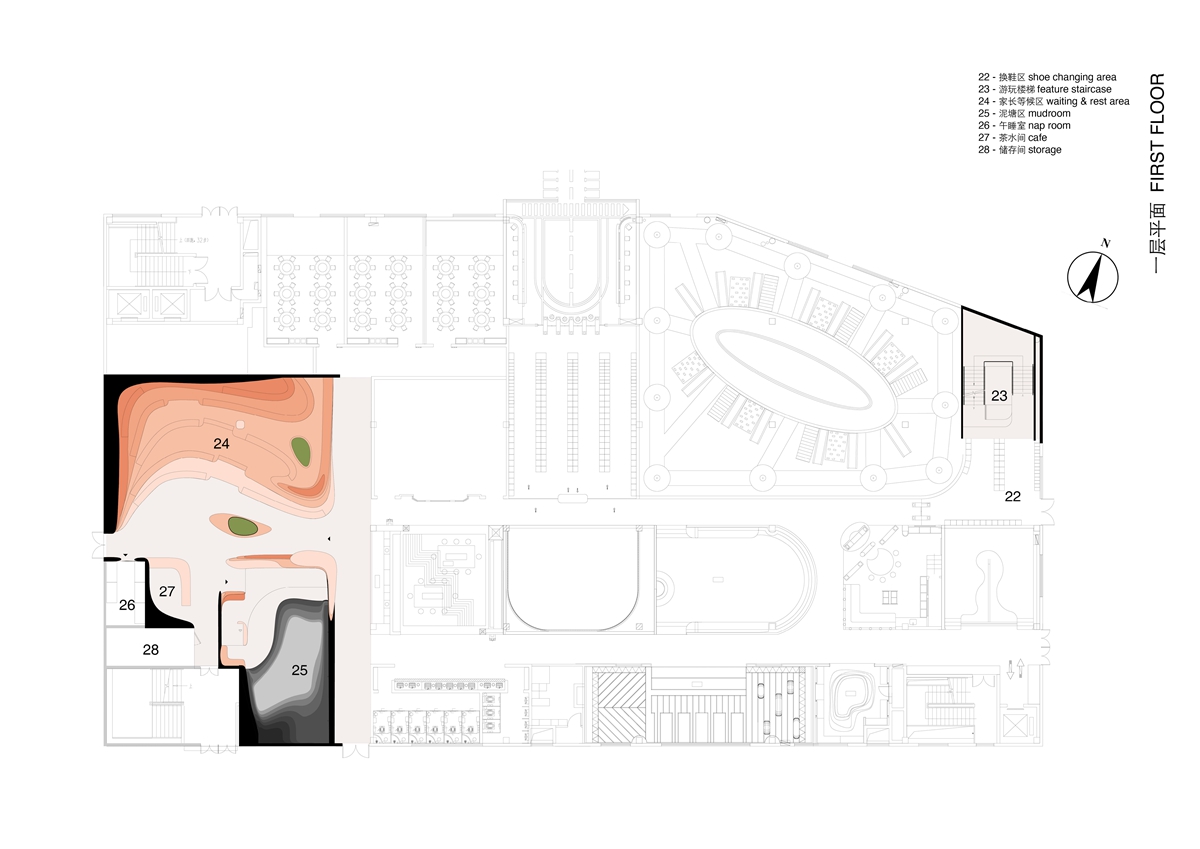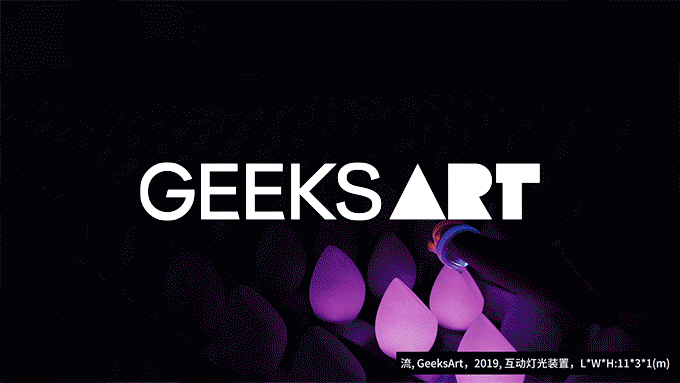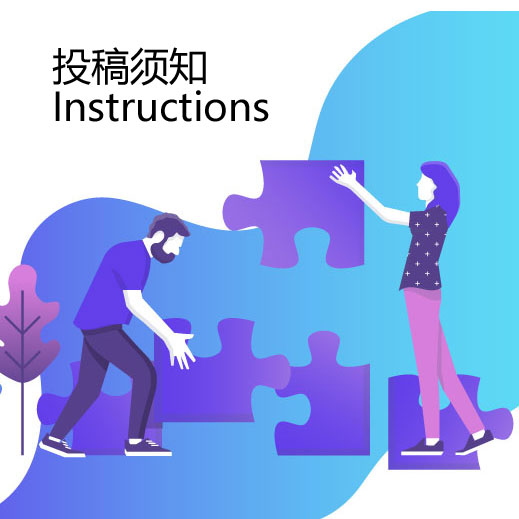未/WAY Studio在新项目蜜糖国儿童成长中心为小朋友打造了一个轻松自然的空间。在小朋友的世界里,一切皆未成定律,包括空间的定义,墙不一定必须顶天立地,地未必是一马平川,而我们更希望小朋友能在这种灵活多变的非“稳定”格局里,去探索、重组并定义属于自己的空间,就像在森林中探索那般快乐。
WAY Studio creates a casual and nature inspired learning environment for their latest project, MTG Learning Center. In the eyes of children, nothing is yet set in stone, including the definition of our surroundings — walls don’t always have to stand straight, nor hit the ceiling, floors can be uneven, it is exactly this type of instability or uncertainty that we would like to recreate in order for children to learn through exploration, to define “space” as their own — just like in the forest.
▲二层分析图
蜜糖国儿童成长中心位于北京,该项目由北京前著名古玩城旧址改造而成。未/WAY Studio受邀为一层局部公共空间进行改造以及为二层新设置的儿童成长中心进行整体设计。项目面积约5,700平方米,跨越上下两层,多功能教室共有6间,其中三间大教室亦可各分割为两个小教室供音乐、美术、创意、无火烹饪等儿童兴趣培训学习空间。另外单独设有木工坊和一间运动或舞蹈教室。整体空间灵活变通,除了满足教育、娱乐需求外,亦可作为餐饮、休息、讲座活动等多重功能使用。
MTG Learning Center is located in Beijing, it is a transformation from an antique market to an education center. WAY was invited to renovate and design the public space on the ground floor and propose a new plan for the second floor. The overall area of this project is approx. 5,700 square meters. There are 6 multi-functional classrooms, a wood carpenter workshop and a gymnastic classroom. The whole plan is free and open, whilst meeting the educational and recreational needs, it could also be used for dinning, lectures, and workshops.
1、旧商铺转身为儿童成长中心
From Old Retail Space to Learning Center
城市的空间规划正从全新设计向改造再生转化,要求建筑师更多地将场地原有的建筑形态与社会情境考虑在内。现代生活的多样性也辐射着空间的设计,对灵活、有效、多功能并且有趣的空间需求逐渐增加。
In metropolitan cities, there has been a shift towards renovation rather than new construction, and from permanent function to spatial flexibility. The architects often face the challenge of accommodating the increasing needs for open, flexible, and multi-functional spaces within the framework of existing buildings.
项目所在空间原为商铺,空间朝北且层高较低。未/WAY Studio的设计方案通过半开放的空间布局,灵活的家具组合与丰富的灯光设计带来了采光充分、通透且充满弹性的室内空间,保证教育空间所需的通风、温度和空气质量条件。
The building selected to house the MTG Learning center was originally an old retail space with low ceiling. Facing to north, the lighting condition is also unsatisfying. WAY’s design ensures adequate natural lighting, ventilation and air quality through a semi-open spatial layout, flexible furniture units and diverse lighting systems.
▲改造后的楼梯间充满具有趣味的装置,让孩子们自在玩耍,也连接起一、二层的空间
一二层相连的楼梯转角还设置了一个反光镜,让孩子们可以在二层看见一层空间内的活动。一组金属喇叭将上下空间连接,让孩子们可以“打电话”。
The original staircase connecting the first and second floor is transformed into a feature staircase. In order to satisfy safety concerns of an open staircase, instead of putting up huge railing walls and safety nets throughout, WAY decided to fill it up completely with playful elements instead. A scuba mirror to reflect activities on different floors, display cases reserved for children creations, and voice pipes that penetrates the stair floor allowing children on different floors to speak to each other through this installation.
▲楼梯空间
蜜糖国儿童成长中心”以“拼图”为灵感,不同功能的空间交错衔接,呈现出具有韵律的空间节奏,带来多样而丰富的公共空间。部分隔的墙体除了部分全封闭之外,大部分空间使用矮墙和布帘进行分隔,开阔的视线让老师或家长方便看护孩子,也促进了三方的沟通和互动。
The spatial layout of MTG Learning Center is inspired by “puzzle” to create a free and flowing plan. Staggering spaces conforms to the pre-existing plan outline, which reduce the length of long narrow hallways. Floor to ceiling walls minimize noise between classrooms, whilst low walls between hallways and classrooms blur the boundary between the public and learning spaces. Furniture can also be reconfigured according to needs, and each set of furniture is supplemented by platform or wall space displaying works created by children.
▲二层的公共区域和教室通过矮墙和帘子进行分隔,开放且弹性,兼顾了孩子和大人的尺度,让孩子们感到安全私密,同时也方便大人看护孩子
当布帘打开时,整个空间贯通相连,将自然光充分引入室内;布帘拉起又可以达到区分空间与隔音的效果,满足不同活动对光环境的需求。室内的家具也被设计为可以自由移动的组合,最大化空间使用的灵活度。
Diverse wall heights meet the needs of both children and adults. It allows children to feel secure in an enclosed space, while views open up at higher level for adults. Cushioned walls and flooring as well as a louvered ceiling system ensure proper acoustic environment. Curtains were also installed to supplement potential classroom divisions, which further reduce noise and provide different lighting conditions.
▲通过布帘区分空间
教室里,家具作为墙体,融合了所有教学或者其他功能转换时需要使用的设施。教室内的灯具像小朋友的三颗小牙,可调节明暗度,满足白天、夜晚、清洁三种模式的灯光需求。
In the classrooms, furniture is used as walls for reorganizing spaces for different activities. The light in the classrooms resemble three teeth with adjustable brightness for day, night and cleaning modes.
▲教室灯饰细节
2、为家庭提供一个休憩的公共空间
Family Space
蜜糖国儿童成长中心采用的瑞吉欧方法(Reggio Emilia approach)在空间设计中得到了贯彻和体现。瑞吉欧认为物理空间可以扮演“教师”的角色,环境是建立关系、语言能力和讨论能力的重要工具,强调孩子们在社群中体验和学习的重要性。蜜糖国儿童成长中心的设计围绕着孩子与孩子、家长与孩子之间的关系预留了充分的公共空间,大人与儿童的尺度交错,让两个群体都可以舒适地在空间中进行互动。
The MTG Learning Center adopts the Reggio Emilia approach, which considers the psychical space as an invisible “teacher”, as the environment could stimulate social interactions, create sense of community and contributes to the cultivation of communication skills. MTG Learning Center provides adequate public spaces for children and adults, ensuring a comfortable place for these two groups to communicate and interact.
▲二层休息区设计灵感
▲二层公共区域
二层为主要的教学与活动区域,中部的开放空间成为一个流通的庭院供孩子们自由活动。二层中部公共空间的灯饰设计以树木为灵感,为室内空间带来自然的气息。三处吊顶灯饰营造出恬静的灰空间,以半透明的亚克力为材料,通过层叠组合打造有机的弧线造型,自然营造空间中的视线焦点。
The second floor is the main space for educational activities, and the open space in the center becomes an open plaza for kids to explore. The light installation design is inspired by trees. With layered acrylic panels, three light installations naturally create gray spaces in the public areas, which attracts the users to stay and gather around.
▲二层灯饰细节
3、自然之色
Colors of Nature
▲二层空间
整个空间色彩缤纷,且充满富有趣味的细节。橙色、绿色和红色点缀在木色调为主的空间中,打造温暖而富有活力的氛围,同时起到了功能标识和空间指引的作用。卫生间使用了灿烂的桃红色,并以围合的结构和拱形门带来剧场般的视觉效果。入口、走廊等公共空间都预留了展示区呈现孩子们的绘画和装置等艺术创作。
The whole space is filled with brilliant colors and playful details. Orange, green and red are applied to create an energetic atmosphere, which also differentiates different functions. The bathroom has an umbrella-like structure, which is in vivid red color with theatrical effect. Spaces are also reserved at the entrance and hallways for displaying the children’s artworks.
▲卫生间的结构如打开的雨伞
首层空间被流动的曲线覆盖,开放的退台式的阶梯座椅提供一个适宜互动的环境,也让访客渐渐从城市匆忙的环境中抽身,缓慢进入一个激发想象力的空间。
The first floor is covered with flowing curvy surfaces, where layers of set-back seating provide a tranquil transition from the hustling city life outside to the imaginative space inside.
▲首层公共区采用了退台式的阶梯座椅,提供舒适的互动环境
“我们希望在设计中传达一种开放的教育理念,通过留白创造一个充满未知的场所,让孩子们自发去探索和体验,成为空间的主人。” 蜜糖国儿童成长中心的设计为孩子们提供了一个激发想象力与创造力的环境,让孩子们在玩乐中学习和成长,也为孩子和家长带来更多的交流与互动,让教育空间成为一位隐形的老师。
“We want to create a space of unknown that allows the children to explore and experience by themselves.” MTG Learning Center provides an inspirational space for children’s growth and also ensures adequate communication between the children and the parents.
▲一层平面图
▲二层平面图
▲空间里的家具组合
项目信息——
项目名称:森林里的儿童成长中心
设计事务所:未/WAY Studio
设计团队:郑涛、黎紫翎、洪勤哲、王亦鸣、郑智超、张泽群、李旭东、何晶洋
客户:蜜糖国儿童成长中心
地址:中国北京市
功能:儿童娱乐及教育
面积:2180㎡
摄影:Fernie Lai
Project information——
Project Name:In The Forest
Design Firm:WAY Studio
Design Team:Zheng Tao,Fernie Lai, Alan Hung,Mark Wang,Cassie Zheng,Zhang ZeQun,Li XuDong,He JingYang
Client:MTG Learning Center
Location:Beijing, P.R. China
Function:Children Entertainment and Education
Area:2180sqm
Photography:Fernie Lai


